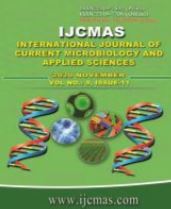


 National Academy of Agricultural Sciences (NAAS)
National Academy of Agricultural Sciences (NAAS)

|
PRINT ISSN : 2319-7692
Online ISSN : 2319-7706 Issues : 12 per year Publisher : Excellent Publishers Email : editorijcmas@gmail.com / submit@ijcmas.com Editor-in-chief: Dr.M.Prakash Index Copernicus ICV 2018: 95.39 NAAS RATING 2020: 5.38 |
Phytoremediation includes phytotransformation (transformation of organic contaminants into a less toxic, less mobile, or more stable form), phytodegradation (metabolism of the organic contaminant by the plant enzymes), phytovolatilization (volatilization of organic contaminants through plant leaves), and rhizoremediation. At the soil root interface (rhizosphere), plant roots exude organic compounds that support a large and active microcosm, which leads to higher biodegradation of toxicants in the rhizosphere ecosystem. The mechanisms adopted by plants, microorganisms, and algae to interact with various types of pollutants. Phytoremediation is a cost effective and novel technology that uses plants to clean up a wider range of organic and inorganic toxicants. Plants can bioaccumulate the xenobiotics in their above ground parts, which are then harvested for removal.
 |
 |
 |
 |
 |